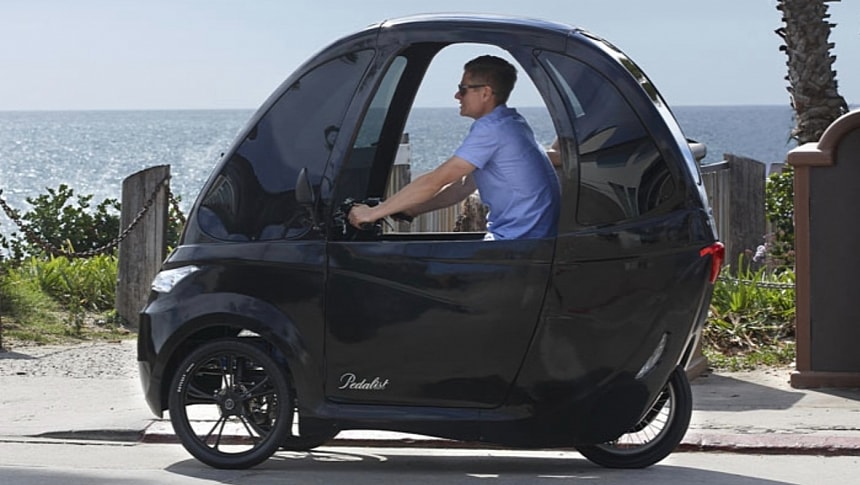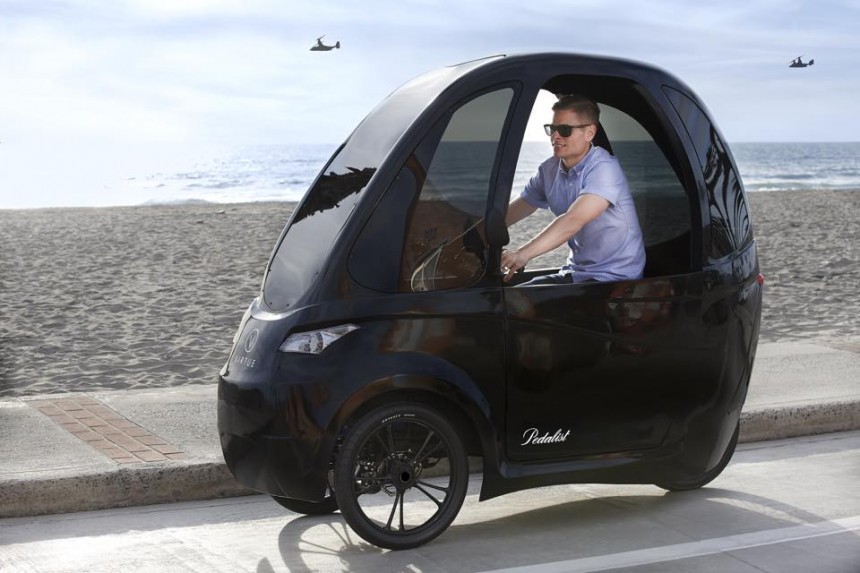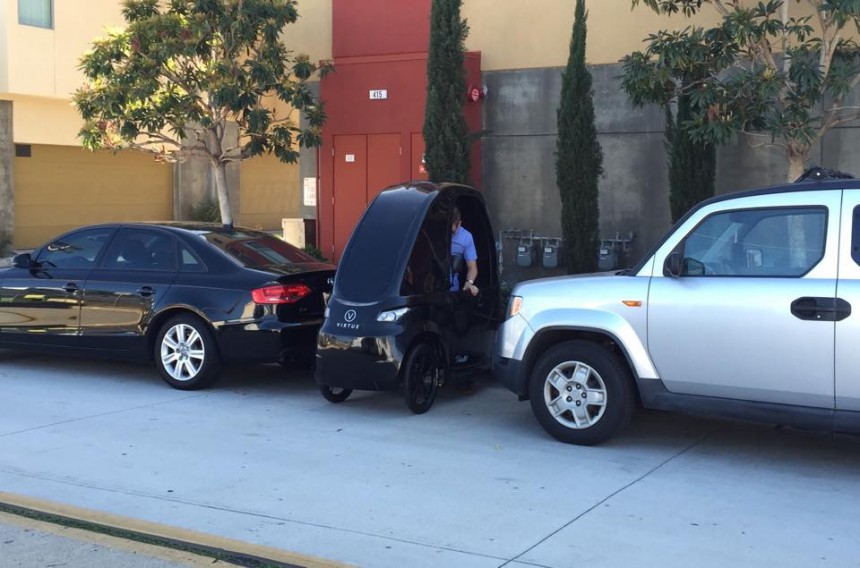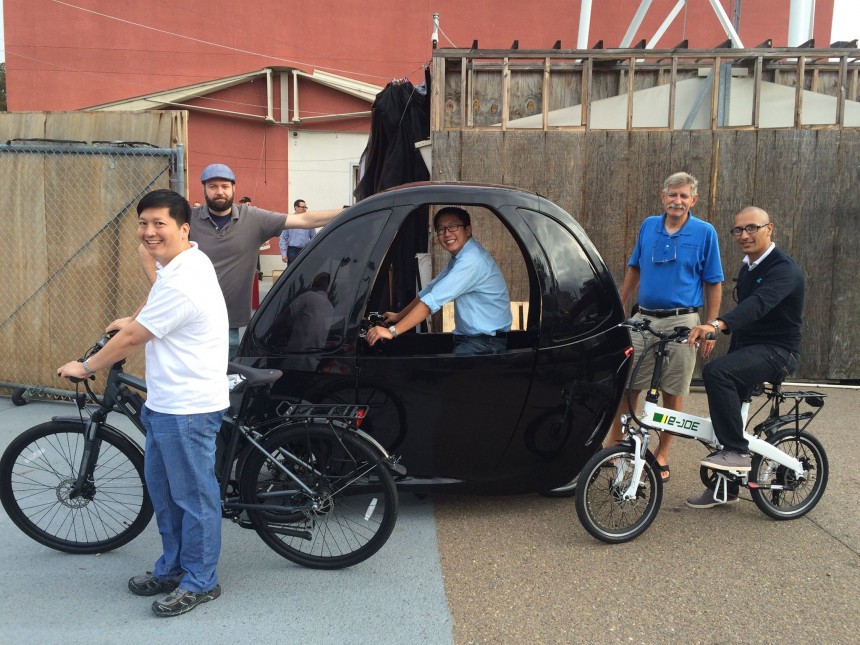The world has been home to some very weird vehicles over the course of human history, and one of them is the Pedalist, a velomobile that was supposed to be the answer to crowded city streets while showcasing some rather solid features and a price tag that you could actually consider.
Folks, nearly ten years ago, the world would begin to see the first prototype Pedalist. It came in swinging at the automotive industry with a Renault Twizy-like design but had absolutely no engine of any kind. A motor, yes, but no internal combustion: it was an EV, and one meant to bridge the gap between cyclists and drivers. Leave your helmets at home for this one, folk.
Now, the Pedalist's story begins with a crew cycling crew dubbed Virtue Cycles. They're a San Diego-based crew with a love of building and designing bikes with an old-school feel but very modern performance and capacities. For example, one of their two-wheelers, the Courier+, is a cargo bike that can even carry children. Did I mention that cargo bikes are growing in popularity, especially in Europe?
But the Pedalist itself seems to have been one of this team's wildest endeavors, showcasing a design that went beyond not only their own but also that of numerous other manufacturers of the time. Yet, there is something you need to know: the Pedalist is currently unavailable, and the manufacturer's website makes no mention of when it'll be back on its own three wheels.
Yes, three wheels, as that's the layout Virtue felt is best for two things: creating a small, nimble, and light vehicle that boasts enough space to craft an enclosure around the operator, giving it the whole "tadpole" look.
Since this is one of the Pedalist's stand-apart features, let's start with that. While it's not clear what materials were used to bring this shell to life, the result is an enclosure that's meant to protect a rider from any road hazards but the weather as well. However, the lack of side windows means that this EV is aimed at warmer climates and San Diego sure is warm.
Now, as narrow as this thing was, the product page states that the Pedalist could handle up to three people inside. Honestly, that's going to come across as looking like a circus act when it's time to get inside. I'd be willing to try to fit my dad alone inside, and that's bound to start trending on TikTok.
The few images we do have of the interior also give us a decent idea of how everything is set up. We can see a cruiser-like handlebar decked out with bells and whistles, brake levers, an LED screen, and to our left, a side mirror. Nothing on the right side of the vehicle, as you should be sticking as close to the side of the road as possible or on a bicycle lane.
As for the propulsion side of things, I mentioned that the Pedalist is an EV, and this means batteries and motors along with some wiring. First and foremost, a 750 W motor is the power behind the Pedalist, but we know nothing of where it's placed. Considering that the rear wheel sits nice and center, it could be mounted to the rear hub. Better yet, if Virtue did the R&D, we can expect a mid-mounted powerhouse.
Regarding performance, the Pedalist was limited to no more than 20 mph (32 kph), and the reason is so that you could eliminate the need for a driver's license, registration, and insurance; they state all this on the product website. What I'm thinking is that this top speed could clearly be manipulated, and we could have squeezed out a few more miles for sure; "It's not illegal until you get caught."
Part two of the electronics story is the battery, and this is where things get a tad wild. According to the brochure available online, the Pedalist boasts a peak range of over 50 miles (80 km) with a 32 Ah battery operating at 48V.
What about you? Would you spend $6,000 on a car alternative with a "tadpole" design? Feel free to comment below.
Now, the Pedalist's story begins with a crew cycling crew dubbed Virtue Cycles. They're a San Diego-based crew with a love of building and designing bikes with an old-school feel but very modern performance and capacities. For example, one of their two-wheelers, the Courier+, is a cargo bike that can even carry children. Did I mention that cargo bikes are growing in popularity, especially in Europe?
But the Pedalist itself seems to have been one of this team's wildest endeavors, showcasing a design that went beyond not only their own but also that of numerous other manufacturers of the time. Yet, there is something you need to know: the Pedalist is currently unavailable, and the manufacturer's website makes no mention of when it'll be back on its own three wheels.
Since this is one of the Pedalist's stand-apart features, let's start with that. While it's not clear what materials were used to bring this shell to life, the result is an enclosure that's meant to protect a rider from any road hazards but the weather as well. However, the lack of side windows means that this EV is aimed at warmer climates and San Diego sure is warm.
Now, as narrow as this thing was, the product page states that the Pedalist could handle up to three people inside. Honestly, that's going to come across as looking like a circus act when it's time to get inside. I'd be willing to try to fit my dad alone inside, and that's bound to start trending on TikTok.
As for the propulsion side of things, I mentioned that the Pedalist is an EV, and this means batteries and motors along with some wiring. First and foremost, a 750 W motor is the power behind the Pedalist, but we know nothing of where it's placed. Considering that the rear wheel sits nice and center, it could be mounted to the rear hub. Better yet, if Virtue did the R&D, we can expect a mid-mounted powerhouse.
Regarding performance, the Pedalist was limited to no more than 20 mph (32 kph), and the reason is so that you could eliminate the need for a driver's license, registration, and insurance; they state all this on the product website. What I'm thinking is that this top speed could clearly be manipulated, and we could have squeezed out a few more miles for sure; "It's not illegal until you get caught."
Now, all that sounds normal so far, but if you keep reading, you'll encounter a statement that says, "The cargo space would easily fit 10 of them and provide 500+ miles of range." Riiight! Sure, one or two extra batteries, but not ten, not with the same level of efficiency coming from the motor.
Last but not least, allow me to point out that this thing was selling for around $6,000, and if that price were possible today, I'm sure we'd see a whole lot of these babies flying around city streets. Personally, for that sort of cash, I'd go for one in a jiffy. Sure, I can see a subculture of these things popping up.What about you? Would you spend $6,000 on a car alternative with a "tadpole" design? Feel free to comment below.













